The Catholic Church has had a significant impact on Missouri from the beginnings of its statehood 200 years ago.
 In 1859, Jesuit Father Pierre-Jean DeSmet and a deputation of Native American chiefs traveled to Fort Vancouver to meet with General Harney, then traveled to Salem, Oregon to meet the Oregon superintendent of Indian Affairs. The chiefs were from the nations of Kalispel, Flat Head, Coeur d’Alene, Kettle Falls, Yakima and Spokane. Father De Smet began ministering in the St. Louis area, including studying Native American languages, in 1823. He established several missions for Native Americans from Iowa to Montana.Photo Credits: Archives & Digital Services · Pius XII Memorial Library · Saint Louis University
In 1859, Jesuit Father Pierre-Jean DeSmet and a deputation of Native American chiefs traveled to Fort Vancouver to meet with General Harney, then traveled to Salem, Oregon to meet the Oregon superintendent of Indian Affairs. The chiefs were from the nations of Kalispel, Flat Head, Coeur d’Alene, Kettle Falls, Yakima and Spokane. Father De Smet began ministering in the St. Louis area, including studying Native American languages, in 1823. He established several missions for Native Americans from Iowa to Montana.Photo Credits: Archives & Digital Services · Pius XII Memorial Library · Saint Louis UniversityAugust 10, 2021, marks the bicentennial anniversary of the founding of the Show-Me State. It was a time in which the great westward expansion was moving at flood tide, starting around 1820, according to the late Jesuit Father William Barnaby Faherty in his history of the Archdiocese of St. Louis, “Dream by the River.”
The existence of Catholicism in this area predated the founding of Missouri by more than 120 years. In the greater St. Louis area, the first Mass was celebrated in 1698 on the banks of the Mississippi River in Cahokia, Illinois, by missionary priests from Quebec; St. Louis was established in 1764, when Pierre Laclede established his trading post and dedicated it to St. Louis IX, King of France.
Missouri’s statehood came soon after the Missouri Compromise of 1820, which admitted Missouri as a slave state and Maine as a free state. It was an effort to preserve the balance of power in Congress between slave and free states. Settlement in Missouri after 1820 was aided by a network of rivers used by steamboats and centered around the City of St. Louis.
Between 1820 and 1830, Missouri more than doubled in population. The Land Act of 1820 offered the public domain in 80-acre tracts for cash at a minimum price of $1.75 an acre. A large percentage of the people moving to Missouri came from Kentucky, Tennessee, Virginia and North Carolina. A group of St. Louis fur traders organized the Rocky Mountain Fur Company in 1822.
St. Louis’ foundation
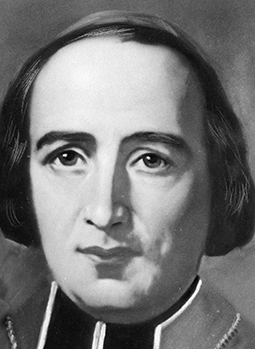 Bp. DuBourg
Bp. DuBourgThe City of St. Louis was incorporated in 1823, when its population was approaching 4,000. Close to half the residents were French. Catholics made up half the residents.
Bishop William DuBourg, who was appointed as bishop of the Louisiana Territory, left St. Louis in November 1820 for New Orleans. By then he had almost completed a brick church to replace the log structure which was the first permanent church in St. Louis and he founded a college for boys in St. Louis.
The Diocese of St. Louis was erected in 1826, five years after Missouri entered the Union.
Perryville
In the southern part of the state, Assumption Parish was founded in 1817 and built by the first bishop of the Diocese of St. Louis, Bishop Joseph Rosati. The Vincentians founded St. Mary of the Barrens, home to their seminary, on a 650-acre tract in 1818. (The seminary closed in 1985.) The site now includes the Church of the Assumption, which houses the Shrine of the Miraculous Medal; an administration building dating to the mid-1800s; and the community’s former classroom and library building. The site also includes shrines, grottos, a cemetery and the community’s residence for retired priests and brothers.
Perryville, located in Perry County, traces its origins to Missouri statehood. On Aug. 7, 1821, three days prior to the official admission of Missouri to the Union, the County was given 51 acres that became the original town.
Ste. Genevieve
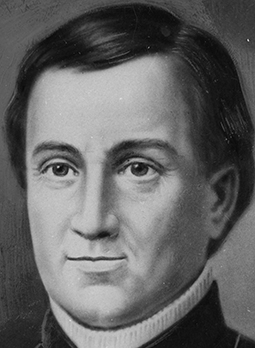 Bp. Rosati
Bp. Rosati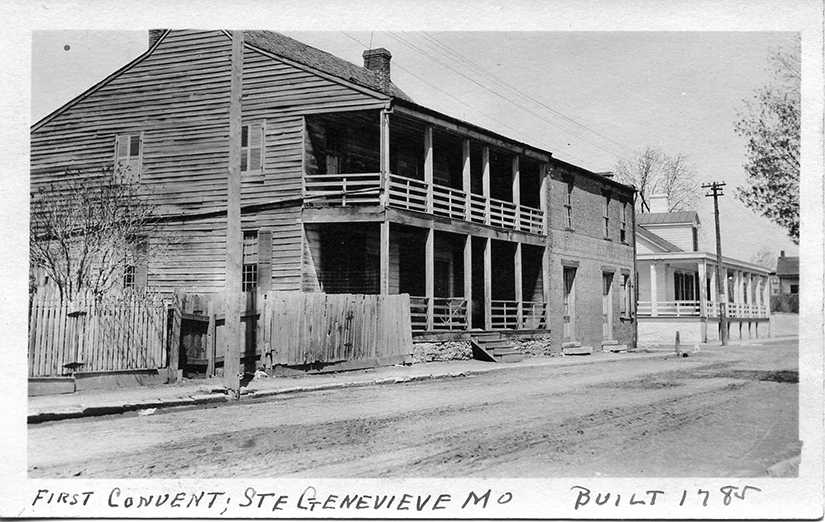 The first convent of the Sisters of St. Joseph of Carondelet in Ste. Genevieve was built in 1785.Photo Credits: Courtesy Archdiocesan Archives
The first convent of the Sisters of St. Joseph of Carondelet in Ste. Genevieve was built in 1785.Photo Credits: Courtesy Archdiocesan ArchivesSte. Genevieve was the first permanent European settlement in Missouri. Settled around 1750 by French colonists, several of its early buildings constructed with vertical posts still exist today, as does this first brick house west of the Mississippi River, built around 1785.
Ste. Genevieve Parish is the oldest recorded parish in the Archdiocese of St. Louis. The Catholic faith first came to the Ste. Genevieve area when Jesuit Father Jacques Marquette came down the Mississippi in 1673.
The first people of the parish were French Catholics from Canada who built a log church on the “Le Grand Champ” or Big Common Field. Beginning in 1759, records of baptisms, marriages, and deaths were kept.
By 1831, to accommodate the growth of the parish, work was begun on a stone church which was consecrated in 1837 by Bishop Rosati. It was around this time that there was a wave of German immigrants to the area, and so English, French and German sermons were being preached.
Social concerns
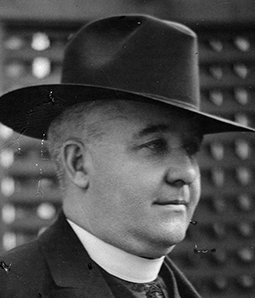 Fr. Dempsey
Fr. Dempsey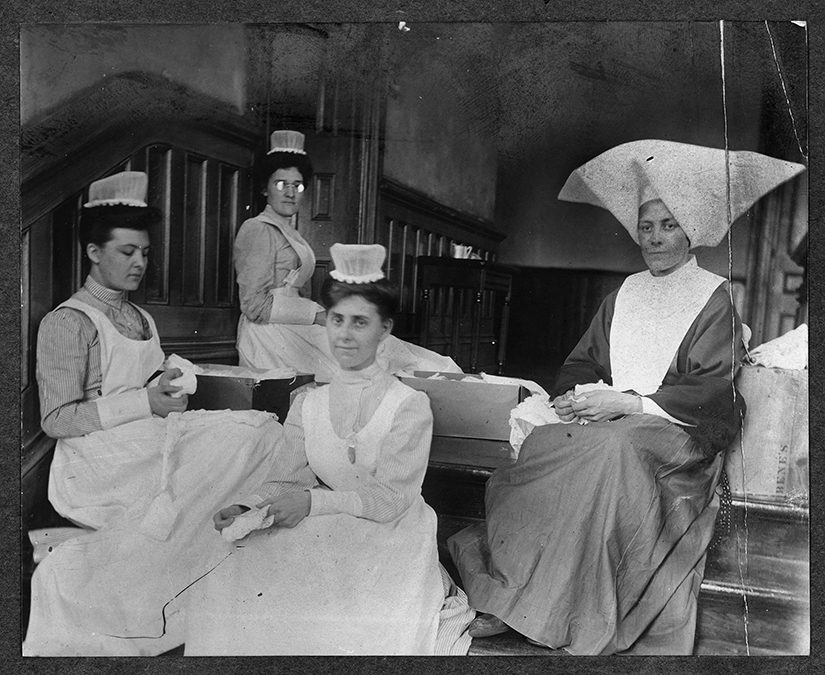 A Sister of Charity sat with nurses at the Mullanphy Hospital estalished by the Sisters of Charity in 1828. The photo , taken around 1907, shows some of the workers at the hospital.Photo Credits: Bernard Becker Medical Library, Washington University School of Medicine
A Sister of Charity sat with nurses at the Mullanphy Hospital estalished by the Sisters of Charity in 1828. The photo , taken around 1907, shows some of the workers at the hospital.Photo Credits: Bernard Becker Medical Library, Washington University School of MedicineMsgr. Michael Witt, associate professor of Church history at Kenrick-Glennon Seminary, said the contributions of the Catholic Church to Missouri are enormous, starting from the early days. In 1828, Bishop Joseph Rosati asked the Sisters of Charity to come to St. Louis to open a hospital. A layman, John Mullanphy, provided property plus $350 to purchase furnishings and $150 traveling money. Four of the women religious arrived by stagecoach in November and opened the St. Louis Mullanphy Hospital — the first hospital west of the Mississippi. They gave free services to many poor people and cared for the victims of the great cholera epidemic of 1832. They also opened the first Catholic orphanage for boys in the West.
New Englanders brought business progress and investment during the early 1800s and southerners came as well — and many were slaveholders, Msgr. Witt said.
Other important charitable works emerged as well. Msgr. Witt cited the establishment of the first operations of the Society of St. Vincent de Paul in the United States at the Basilica of St. Louis, King of France (Old Cathedral) in 1845. The extensive network of parish conferences and volunteers continues to make a lasting impact on people in need throughout the archdiocese.
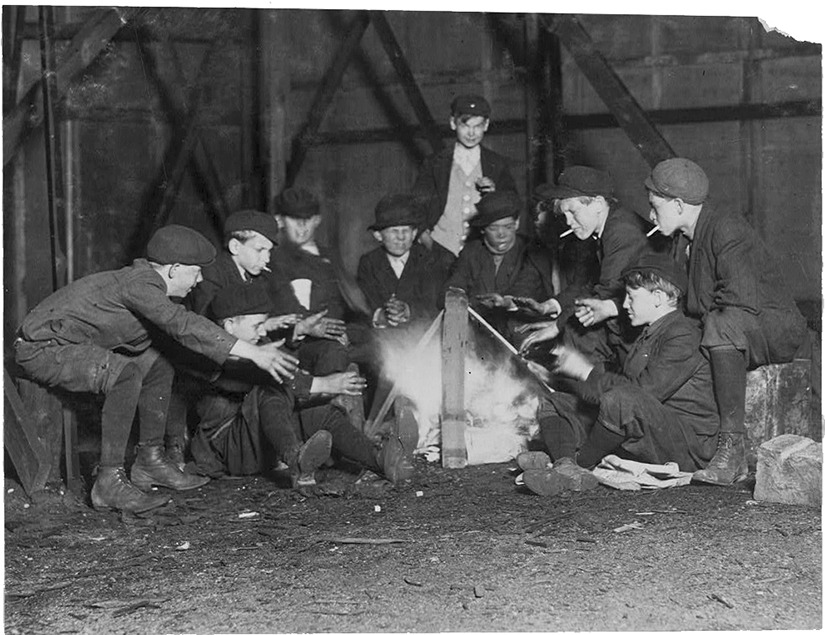 A Jefferson Street gang of newsboys hovered over a campfire near Olive Street on May 7, 1901. Father Peter Dunne began a ministry helping ‘street children’ in 1907.Photo Credits: Courtesy Archdiocesan Archives
A Jefferson Street gang of newsboys hovered over a campfire near Olive Street on May 7, 1901. Father Peter Dunne began a ministry helping ‘street children’ in 1907.Photo Credits: Courtesy Archdiocesan ArchivesFather Peter Dunne began a ministry helping “street children,” and Father Tim Dempsey established residences for the homeless. Father John J. Butler, with the help of Cardinal John J. Glennon, organized these and other services offered by the archdiocese in its orphanages, employment agencies, homeless shelters, and residences under the umbrella of the Catholic Charities network.
“It continues to be a treasured gift to the people of St. Louis,” Msgr. Witt said.
Educational expertise
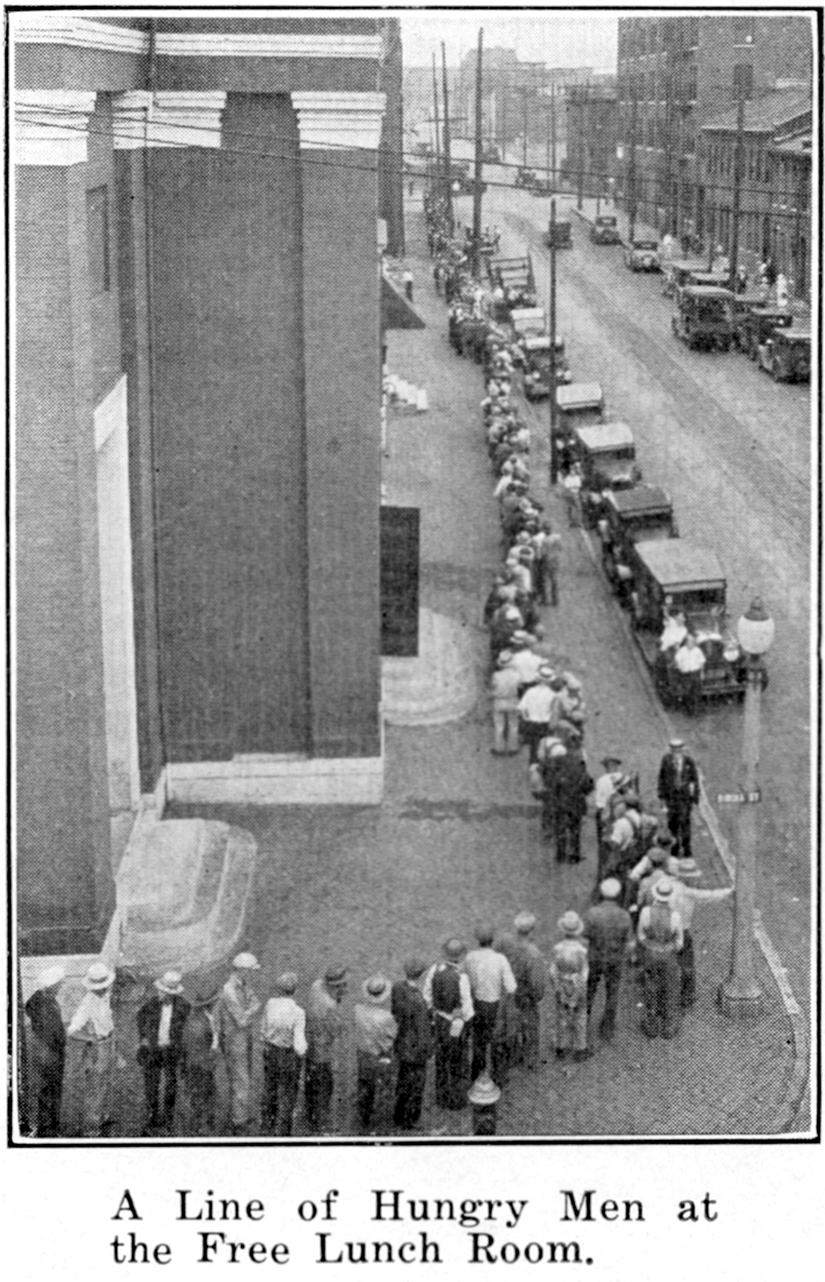 A line of hungry men at a free lunch room at Father Dempsey’s Hotel for Workingmen, which was founded in 1906.Photo Credits: Courtesy Archdiocesan Archives
A line of hungry men at a free lunch room at Father Dempsey’s Hotel for Workingmen, which was founded in 1906.Photo Credits: Courtesy Archdiocesan ArchivesSaint Louis University is one of many “firsts.” Founded in 1818, it became the first institution of higher learning, first medical school, first law school and first business school west of the Mississippi River; first nursing school to offer a Ph.D. program; first university in a former slave state with a policy of integration; first heart transplant in the Midwest; and first to grant a Ph.D. in aviation.
Mother Rose Philippine Duchesne and the Religious of the Sacred Heart also had just arrived in St. Louis in 1818. They were first sent to St. Charles and several years later moved to Florissant. Also in 1818, an academy for boys opened, offering classes in Latin, English, French, mathematics and geography.
The Jesuits, Christian Brothers, Society of the Sacred Heart, Visitation Sisters, Ursulines, Sisters of St. Joseph, School Sisters of Notre Dame and other religious communities began schools. Initially those women religious taught Catholics and nonCatholics since there were no public schools.
Bishop Rosati, always interested in education, hoped to establish an institute for the deaf. Mother St. John Fontbonne, superior of the Sisters of St. Joseph in France, agreed to assign Josephites to learn this method of teaching and a wealthy French woman, Countess de la Rochejacquelin, agreed to finance their journey to the distant missions of Missouri in 1836. Although the Sisters of St. Joseph were to teach and serve in many ways in the St. Louis Diocese, education of the deaf remained a prime apostolate.
 Delegates who attended the annual meeting of the Society of St. Vincent de Paul after a Mass at the Cathedral of St. Louis in 1928.Photo Credits: Courtesy Archdiocesan Archives
Delegates who attended the annual meeting of the Society of St. Vincent de Paul after a Mass at the Cathedral of St. Louis in 1928.Photo Credits: Courtesy Archdiocesan Archives
>> Origins of name Missouri
In 1673, Father Jacques Marquette and explorer Louis Joliet traveled down the Mississippi River. When they reached another river that came from the northwest, Father Marquette noted on his map that a large tribe of native people referred to as ouemessourit lived upstream. The term means “people with the big canoes” or “those who have dug-out canoes.”
The mighty river which flowed into the Mississippi eventually was named after the tribe that lived along its banks. It became the Missouri River. Later, when settlers came, the area became known as the Missouri Territory and in 1821, when the territory became a state, it adopted the name Missouri.
Source: Missouri Division of Tourism
In 1821,
Missouri was under the leadership of under Bishop William DuBourg and
part of the Diocese of the Louisiana and the Two Floridas, which at that
time encompassed with the entire Louisiana Purchase, the state of
Illinois, the territory of Arkansas, and the Spanish territories of
Alabama, Mississippi and Florida.
The parishes that existed in present-day Archdiocesan territory were:
• Ste. Genevieve 1759
• Old Cathedral in St. Louis City 1766
• St. Ferdinand in Florissant 1788
• St. Francis of Assisi in Portage des Sioux 1792
• St. Charles Borromeo in St. Charles 1792
• Assumption of the BVM (St. Mary of the Barrens seminary) at Perryville 1817
•
Sts. Mary and Joseph in Carondelet 1821 (Carondelet, aka Vide Poche,
was an independent town from St. Louis until its incorporation in 1832.)
From St. Louis, the Diocese of Louisiana and the Two Floridas also ministered to:
• Holy Family Church in Cahokia, Illinois
• St. Joseph in Prairie du Rocher, Illinois
• Immaculate Conception in Kaskaskias, Illinois
In
1821, the diocese recorded sacraments at the Cathedral of St. Louis:
124 infant baptisms and six adult baptisms, six conversions, 18
marriages and 77 deaths. There were 16 priests working in the Missouri
and Illinois areas, with only four priests stationed in St. Louis City.
Source: Archdiocesan Archives
Slaveholding and the Church
The archdiocesan Office of Archives and Records is researching the archdiocese’s involvement in the institution of slavery through an initiative called “Forgive Us Our Trespasses”.
By examining sacramental records, financial ledgers, written correspondence, papal documents and business contracts and other documents. researchers hope to learn more about the individuals who were enslaved by bishops and archdiocesan priests and to eventually connect with descendants.
To learn more about the project, see: www.archstl.org/archdioceses-research-into-history-with-slavery-reveals-three-bishops-priests-as-slaveowners-6587.
>> Important milestones
1698 • First Mass in the state, celebrated by missionary priests from Quebec
1750 • Ste. Genevieve settled by French colonists, with sacramental records beginning in 1759
1763 • Pierre Laclede established a trading post, which would eventually become the city of St. Louis
1818 • Saint Louis University founded
1821 • State of Missouri admitted to the union
1823 • Incorporation of the city of St. Louis
1826 • Diocese of St. Louis was erected
1828 • Sisters of Charity come to St. Louis to open first hospital
1845 • Founding of the Society of St. Vincent de Paul in the United States at the Old Cathedral